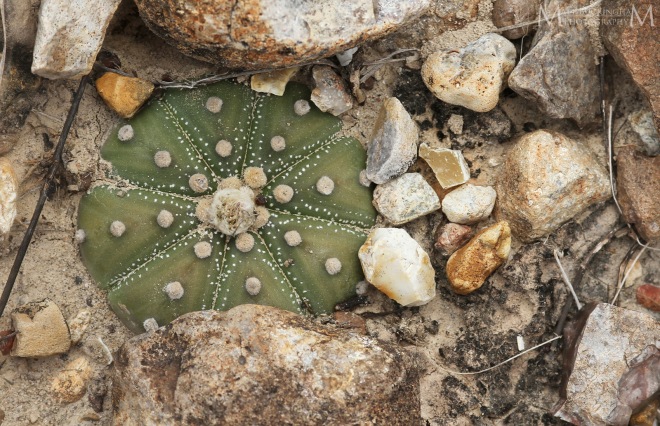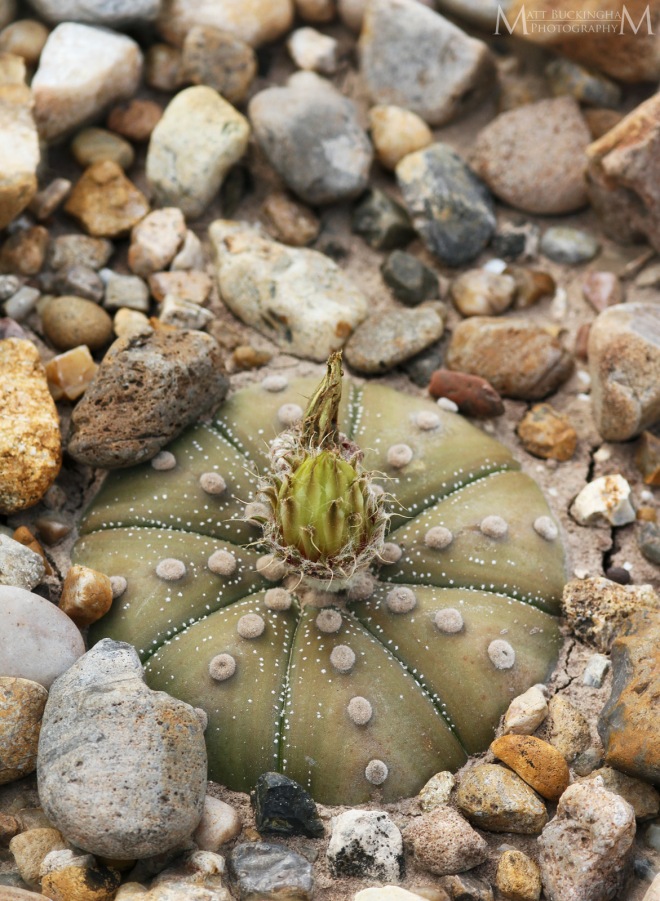
Star Cactus
The Star Cactus (Astrophytum asterias) may be the rarest, most unique cactus in the country. It is known from only a handful of sites in the Tamaulipan thornscrub of extreme southern Texas and northeastern Mexico. It is so imperiled that it has been listed as Endangered by the U.S. Fish and Wildlife Service. It is severely threatened by land use conversion and habitat loss. Fortunately The Nature Conservancy in Texas acquired the property that may have the largest remaining Star Cactus population in the country. Here they undertake conservation measures and reintroduction efforts to ensure that this iconic cactus remains for generations to come.
I have donated a number of photographs to The Nature Conservancy in the past. When we decided on traveling to South Texas I reached out to them to see if I could arrange a visit to see and photograph these imperiled cacti. They graciously approved my request, and we met with volunteer Paul Bryant, who gave us an excellent tour of the property. Having previously worked for a non-profit land trust similar to the Nature Conservancy, I know how heavily we relied on our volunteers. I also learned to recognize the good ones, and I had no doubt that Paul was a valuable asset to the Nature Conservancy.

Star Cactus
Though many were growing in the open, the star cactus was extremely difficult to spot. When its not flowering, it is inconspicuous, blending in with the scattered rocks covering the gentle slopes where it grows. Also known as the Sea Urchin Cactus, Sand Dollar Cactus, and False Peyote, it is a spineless cactus that lies relatively flat against the surface in times of drought. Following rains, however it swells with water and can appear quite plump. I had hoped to photograph the bright yellow blooms, but it was not to be. We saw a number of plants that had recently blooms, and others that were preparing to, but we weren’t fortunate to catch any in the act. That was ok though, it was a wonderful experience just to get to see them in their element. The plant itself is beautiful, and made for some interesting photographs even without its bloom.

Star Cactus
There were several other cacti growing in the vicinity of the Stars. The most conspicuous was the aptly named Glory of Texas (Thelocactus bicolor). In Texas this species only occurs in the extreme western and extreme southern portions of the state. Though the populations are disjunct in Texas, they are more or less connected through Mexico. We saw many of their bright pink blooms, both in the open and at the base of nurse plants.

Glory of Texas

Glory of Texas

Glory of Texas
We also saw a few of the formidable Horse Cripplers (Echinocactus texensis) in bloom. Looking at these beasts, its not hard to see how they got their name.

Horse Crippler

Horse Crippler
I only saw one Runyon’s Pincushion Cactus (Coryphantha pottsiana) in bloom. Though not as scarce as the Star Cactus, this species is also rare in Texas, where it is known from only three counties along the Rio Grande.

Horse Crippler
And then there were more Lady Fingers (Echinocereus pentalophus). Though these proved to be fairly common during the trip I never tired of seeing them, and could not resist every opportunity to photograph them.

Lady Finger Alicoche

Lady Finger Alicoche
I found one particularly robust flowering specimen growing among a clump of Varilla (Varilla texana). I came to learn that where Varilla grows, there are usually other interesting things to be found.

Lady Finger Alicoche

Lady Finger Alicoche
We also observed several Strawberries Pitayas (Echinocereus enneacanthus), Fitch’s Hedgehog Cactus (Echinocereus fitchii), Heyder’s Pincushion Cactus (Mammillaria heyderi), and a few Peyote (Lophophora williamsii) on the property, however these weren’t in bloom. I had hoped to photograph Peyote this trip, but a suitable opportunity did not present itself.
There were plenty of other flowering plants to admire, however. Perhaps the most striking was the Berlandier’s Nettlespurge (Jatropha cathartica). It seemed to prefer the same gravelly slopes as the cacti.

Berlandier’s Nettlespurge
While on my knees looking for Peyote I spotted a group of tiny yet striking blooms. The Glandular Milkwort (Polygala glandulosa) occurs in only a handful of South Texas Counties.

Glandular Milkwort
It was hard not to stop and admire the Guayacan (Guaiacum angustifolium), which was blooming throughout the thornscrub.

Guayacan
After arriving at the property, we split up to scour the area. Seth soon came to find me. He had an excited grin and told me that he had something to show me. He led me to a large Texas Tortoise (Gopherus berlandieri) that had crawled halfway down its burrow. I wanted so badly to photograph it, but despite waiting for some time, it refused to show its face, and we had to continue our hunt for the Star Cactus. I was luck enough to photograph another South Texas Treasure, the orb-weaver Argiope blanda. A. blanda occurs in the United States only in extreme southern Texas.

Argiope blanda
Though I did not get to photograph the Star Cactus in bloom, it was a day full of natural wonder spent in good company, and I left with a real sense of contentment, both in the things I had seen and photographed, and in the knowledge that organizations like the Nature Conservancy exist to protect our planet’s great biodiversity.
